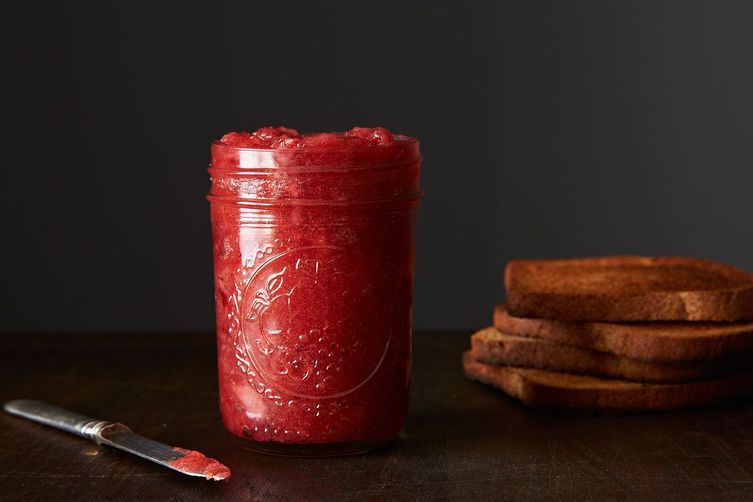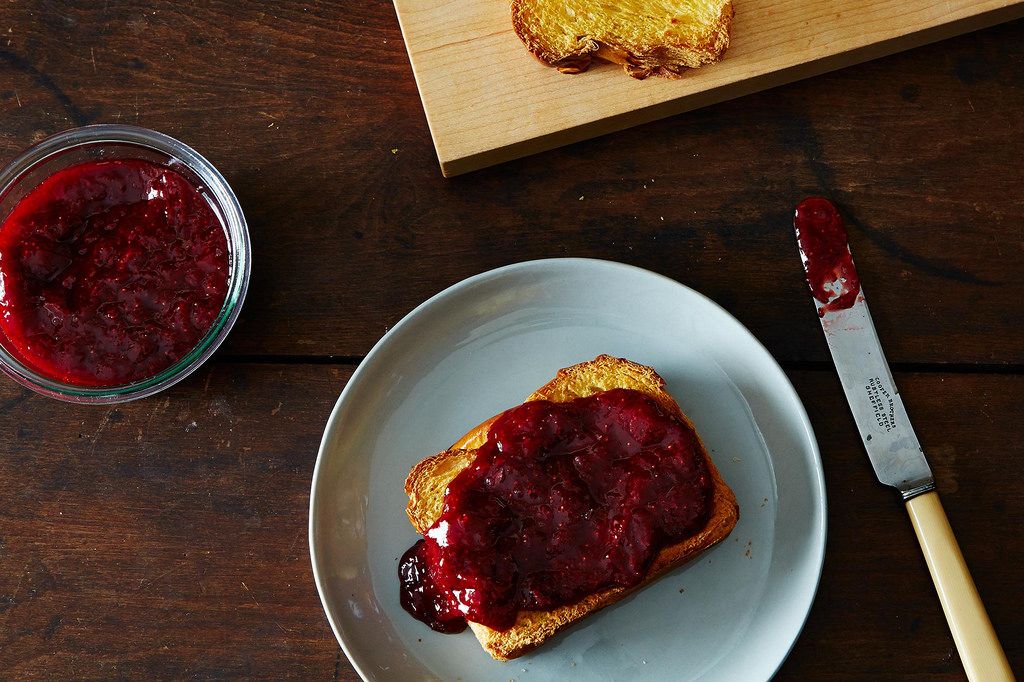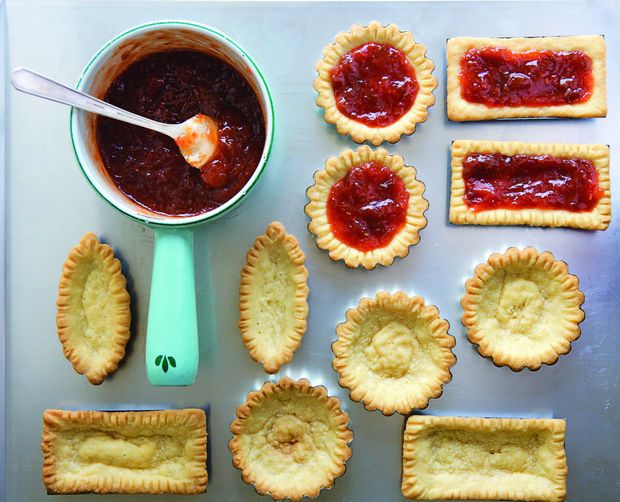Inspired by conversations on the Food52 Hotline, we're sharing tips and tricks that make navigating all of our kitchens easier and more fun.
Today: Jams, preserves, and confitures are all heavenly on toast -- but it's about time we learned the difference between them.

It’s easy to be confused by all the names attached to fancy fruits in jars: Jams, preserves, confitures, conserves, sauces, and chutneys are all ways of preserving fruit by cooking it in sugar. Today I’m going to review a bit of taxonomy, but keep in mind: Whatever it is called, it’s all heavenly on toast.
In a classic jam, the fruit is diced small and partially mashed before cooking, and the suspending syrup is thick and opaque. Confitures and preserves are kissing cousins: whole or elegantly sliced fruit suspended in syrup is a confiture, which comes from the French verb confire, meaning “to preserve.” In confitures, the fruit is shown to great advantage, glistening in a clear gel; the texture tends to be looser than that of jam. Confitures are perfect on yogurt or crêpes, or spooned over waffles.
More: Your new fall tradition is making this Sugarless Grape Jam.
Neither as evenly textured as jam nor as refined as confitures, preserves are the middle child of the fruit spread family. They are made from roughly chopped fruit and are more rustic, and less fussy, than confitures. I like preserves in yogurt or as filling for a cake or cookie.

In most cases, the fruit determines the method. Beautiful, first-of-the-season strawberries are small -- the size of a thumbnail -- and so I make them into confitures, cosseting the berries, turning them gently in hot sugar syrup so they hold their shape. Because there is little pectin in the berries, the result is loose and even a little runny, which I expect. Come November, when tiny, sweet local strawberries are just a memory, consistency is the last thing I worry about. I tuck those individual jewels into Bundles of Joy, a one-bite phyllo treat filled with jam and cheese. Add a nugget of goat cheese for a party-ready dessert or hors d’oeuvre.
Peaches and plums, chopped small, make a great spreadable jam. If you slice them thick, they’ll never be spreadable -- but their jam is divine stirred into yogurt.
I’ll admit, I use the words “jam,” “confiture,” and “preserves” interchangeably. Any of them makes a quick Jam Tart, served with a spoonful of crème fraîche; I also like to dab them into thumbprint cookies. Some fruits, like plums or currants, make sensational sauces. Peach, apricot, or cherry jams, warm and layered between cubes of pound cake and splashed with a little booze, makes a trifle ready for company.
More: Our community has some pretty great ideas for how to use jam.

Chutneys are misunderstood condiments, a jam where savory dances with sweet. They are made like a jam, with fruit suspended in a syrup of vinegar and sugar, but they’re shape shifters: These tangy combinations can be spicy or not, and often include dried fruit as well as fresh.
Add a handful of pecans or pistachios, walnuts or almonds, macadamia or pine nuts to jam, and you’ve got conserves. Rolling up conserves in Rugelach makes these cookies super simple to put together in one fell swoop (you can also just use your favorite jam and add any toasted nuts after the fact). Those that love cheese should know that cheese loves conserves; that means (using new math) that you will love conserves, too.
Now that you know what to call it, isn’t it time you learned to preserve?
Photos by James Ransom




See what other Food52 readers are saying.